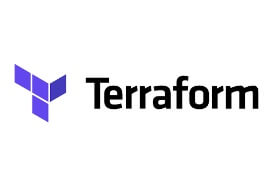![]()
We provide cloud transformation services including cloud migration, cloud native development and other cloud solutions. Every organization’s journey to the cloud is different. So, we meet our clients at their point of need to support their overall cloud transformation goals.
Across every industry, the benefits of consolidating your product offerings and business processes in the cloud are tremendous. Our cloud transformation services will streamline your operations and give you the ability to adapt, innovate and scale faster. With your data in the cloud, you can do away with disparate data silos and aggregate data in data lakes and purpose-built data warehouses. You can process that data with machine learning (ML) and artificial intelligence (AI) tools to gain insights that give you a competitive advantage.
Cloud Transformation Services
 Moving your operations and your data to the cloud also improves security management. Our cloud migration services allow you to manage security policies and updates across your organization. And the best part is that transitioning to the cloud likely reduces your cost as you only pay for what you use. With the variety of managed services available from cloud providers, your team is freed from basic IT infrastructure chores to focus on differentiating features that give you a business advantage.
Moving your operations and your data to the cloud also improves security management. Our cloud migration services allow you to manage security policies and updates across your organization. And the best part is that transitioning to the cloud likely reduces your cost as you only pay for what you use. With the variety of managed services available from cloud providers, your team is freed from basic IT infrastructure chores to focus on differentiating features that give you a business advantage.
What are Cloud Migration Services?
Cloud migration is moving existing on-premise workloads and data to the cloud. Depending on your organization, this might include a variety of proprietary cloud transformation solutions as well as licensed (and customized) software solutions. The industry refers to the R’s of cloud migration which include the following:
Rehost
Commonly referred to as lift and shift, rehosting lifts servers and applications from the current hosting environment and shifts them to a cloud provider as-is. This is often the first step for cloud migration services.
Replatform
Replatforming is similar to rehosting, except some changes are made to the code to take advantage of the cloud deployment model. The goal of replatforming is to capitalize on the cloud environment’s benefits while minimizing changes.
Refactor (or Rearchitect)
The refactoring or rearchitecting step goes beyond replatforming to modify the application to better support the cloud environment.
Rebuild/Replace (or Retire)
The rebuilding, replacing or retiring of cloud transformation entails looking at an organizations’ applications and deciding whether to 1) rewrite using cloud-native development, 2) replace with a cloud offering, or 3) if an application is outdated and unused, retiring it.
Repurchase
Repurchasing is a form of replacement in which a software-as-a-solution (SaaS) provider provides a new cloud-native application that delivers similar capabilities.
Retrain
To fully realize the advantages of the cloud, your team may need retraining with a cloud mindset. Our cloud transformation consultants work alongside your development, IT and DevOps team for retraining.
Cloud migration — like all migrations — is a journey. Consequently, your organization will likely employ various strategies over time to move workloads and continue optimizing applications for performance, cost and features. In general, the trade-offs are the cost of the migration option selected for the benefits received. While rehosting will be the lowest cost in the short term, you will not get all the benefits of the cloud. As your investment in replatforming, refactoring or rebuilding increases, your benefits will increase including additional cost savings, and vastly improved ability to innovate and release new features quickly.
Our typical cloud migration engineering services fall into the Refactor (or Rearchitect) and Rebuild categories. We also include a bonus R, which we call “Retrain.” To fully realize the advantages of a cloud transformation, your team needs to be retrained with a cloud mindset. This includes combining development and operations (DevOps) teams rather than having a separate IT group and using agile software development methodologies. We prefer our cloud transformation consultants to work alongside your team for retraining, or if your team has mature agile processes, we can work within your system.
Cloud Transformation Services & Solutions Case Studies
Cardinal Peak provides cloud transformation solutions to support our clients. Check out the following case studies to learn more about our cloud transformation services. See all our cloud services case studies.

Modernizing a Global QC Platform with AWS
We helped a medical diagnostics leader transform their legacy QC system. Our team re-architected the solution as a scalable, cloud-native platform on AWS to support global operations and real-time analytics.

Minimizing Downtime & IT Burden with Cloud-Connected Lab Instruments

Developing a Personalized HLS Streaming Platform
We designed and developed a personalized HLS streaming platform utilizing traditional job queue, priority queue and stream data models to drive media streaming app growth with personalization.
We helped a medical diagnostics leader transform their legacy QC system. Our team re-architected the solution as a scalable, cloud-native platform on AWS to support global operations and real-time analytics.
We designed and developed a personalized HLS streaming platform utilizing traditional job queue, priority queue and stream data models to drive media streaming app growth with personalization.
Cloud Transformation & Migration Service FAQs
What is Cloud Transformation?
Cloud transformation is the process of removing data from silos and transforming a business’s operations from a series of on-premise applications managed by an IT department to a cloud-centric solution that drives significant operational improvements. The cloud transformation process includes migrating existing data and apps to the cloud, refactoring applications to take advantage of the cloud environment as they are relocated, and developing new cloud-native applications. When the transformation is complete, the business should be able to innovate faster and have lower operational costs.
What is the Difference Between Cloud Transformation and Cloud Migration?
Cloud transformation and cloud migration are often mentioned together, creating some confusion between the two terms. While they are related, they are not interchangeable. Cloud migration refers to the process of moving data or an application from a local server to the cloud. Cloud transformation involves modernizing and optimizing an organization’s data management, applications, analytics and security to be cloud-centric and reap the benefits of the cloud including adaptability, innovation and scale.
A cloud-centric operation allows organizations and their development team(s) to focus more on differentiated customer features and less on undifferentiated infrastructure. Well-architected cloud transformation solutions enable data to be aggregated in data lakes and purpose-built data warehouses to facilitate analysis, such as ML and AI, to gain insights that provide competitive advantage.
What are the Benefits of Cloud Transformation?
While cloud transformation is often initially viewed as a cost-saving solution, its value to a business includes all of the following strategic benefits and more:
- Improved Data Access
Cloud-based systems allow customers and employees to access up-to-date information from any location at any time, which enhances communications and simplifies IT requirements. - Increased Mobility
Cloud-based data is easier to move and combine in data lakes and purpose-built data warehouses where you can process that data with big data, ML and AI tools to find business insights that give you a competitive advantage. - Enhanced Security
Moving your operations and data to the cloud improves security management. By managing security policies across your organization, there’s no need to worry about different machines that don’t have the latest security patch. - Employee Productivity
With the variety of managed services available from cloud providers, the speed and agility of business operations can significantly increase, freeing your team to focus on the features that give you a business advantage. - Scalability
Cloud systems can scale near instantaneously, allowing you to scale operations based on demand without facing the delays typical of upgrading on-premise IT infrastructure. - Reduced Costs
Cloud services reduce costs by eliminating upfront capital expenditures for infrastructure. Instead, you only pay for what you use. Labor and maintenance demands are also reduced, enabling your staff to focus on differentiated feature development.
Cloud Transformation Related Articles
Do you want to discover more about our cloud transformation and cloud migration services? The blog posts below delve into speeding up Python programs, how to deploy and maintain cloud infrastructure and cloud optimization.

Cloud Optimization — a Matter of Cost vs. Complexity

Deploying and Maintaining Cloud Infrastructure? Take a Look at Terraform

AWS re:Invent Chalk Talk: Connect Your Device to the Cloud with AWS IoT ExpressLink
Our engineer presented a demo at AWS re:Invent on AWS IoT ExpressLink. ExpressLink transforms your legacy device into an IoT-connected device — with minimal design effort.
Our engineer presented a demo at AWS re:Invent on AWS IoT ExpressLink. ExpressLink transforms your legacy device into an IoT-connected device — with minimal design effort.
